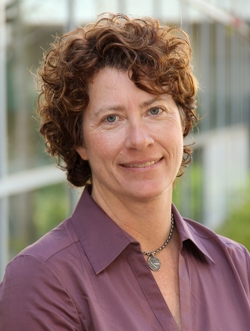$8.4M grant funds new HIV study at CHLA targeting high risk groups
Research aims to improve HIV care and prevention among young men of color.
Children’s Hospital Los Angeles announced Thursday an $8.4 million research grant aimed at improving HIV care and prevention among black, Latino and multiracial gay and bisexual young men — a group at highest risk for contracting the AIDS virus.
The Healthy Young Men’s Study funded by the National Institutes of Health “will investigate use of the latest technologies and biomedical interventions to help prevent new HIV infections in highly impacted communities, and improve health outcomes for young men living with HIV,” according to CHLA.
The study’s principal investigator is Michele D. Kipke, vice chair of research in the Department of Pediatrics at CHLA and director of the Community, Health Outcomes & Intervention Research Program of The Saban Research Institute at CHLA.
She cited a 2012 report from the Centers for Disease Control and Prevention, which found that of new HIV infections in young men who have sex with men, 54 percent were among blacks and 22 percent were among Latinos.
The five-year study will examine risk factors for HIV infection, as well as barriers to or facilitators of engagement in care and prevention in this population.
“The rate of new HIV infections in this group is extraordinarily and unacceptably high. This is the only group for which there has been no change in either rates of new infection or cases of AIDS,” Kipke said. “For example, young African-American homosexual men are five times more likely to be HIV-positive, seven times more likely to be undiagnosed, and are less likely to seek and remain in HIV/AIDS care than their white counterparts,” Kipke said.
She added that her past studies show that homophobia and racism contribute to the high rates of infection among the group.
In addition, it is estimated that about 60 percent of all young people who are HIV-positive are unaware of their status.
Changing the course of the epidemic “will require engaging high-risk populations in testing, and providing high-quality health care for people living with HIV using a “treatment as prevention” strategy, in which antiretroviral therapy leads to a dramatic reduction in transmission rates,” according to the researchers.
The HYM study builds upon prior research led by Kipke, who began her career during the onset of the AIDS epidemic in New York City in the mid-1980s.
She has led several large NIH and CDC studies focused on understanding risk factors among adolescents and vulnerable populations, and developing new interventions focused on stopping the spread of HIV, according to CHLA.
The study team plans to recruit and track 450 YMSM of color within the Los Angeles area.
The researchers will “investigate the use of new technologies such as mobile and telehealth solutions, smartphone apps and wearable devices to examine how to better engage this vulnerable youth population in HIV testing, and then link HIV-positive individuals to quality health care and help them to adhere to treatment,” according to CHLA.
“We now have new biomedical interventions that have the potential to significantly curb new infections, and new technologies to help improve adherence to treatment for those who have been infected,” said Kipke, who is also a professor of pediatrics and preventive medicine in USC’s Keck School of Medicine and co-director of the Southern California Clinical and Translational Science Institute at USC.
“The HYM study provides a unique opportunity to leverage advances in science and medicine to help end the HIV epidemic in the United States,” she said.




